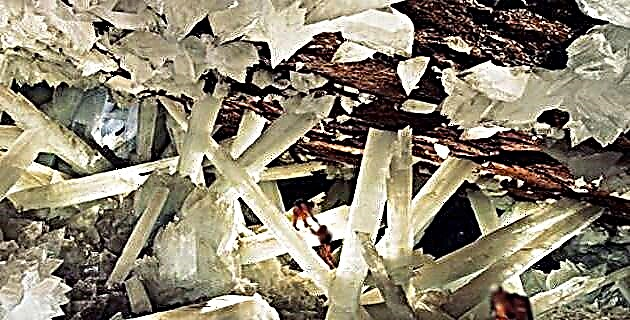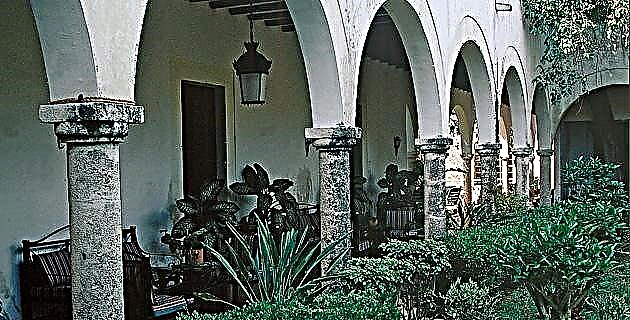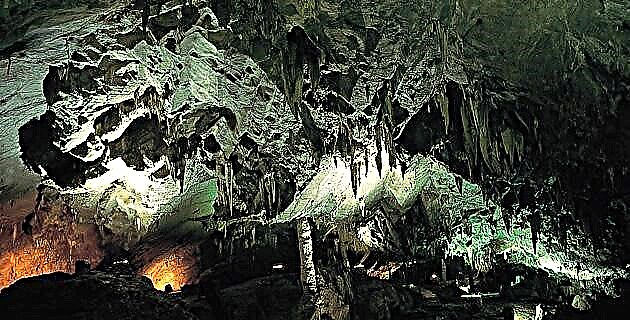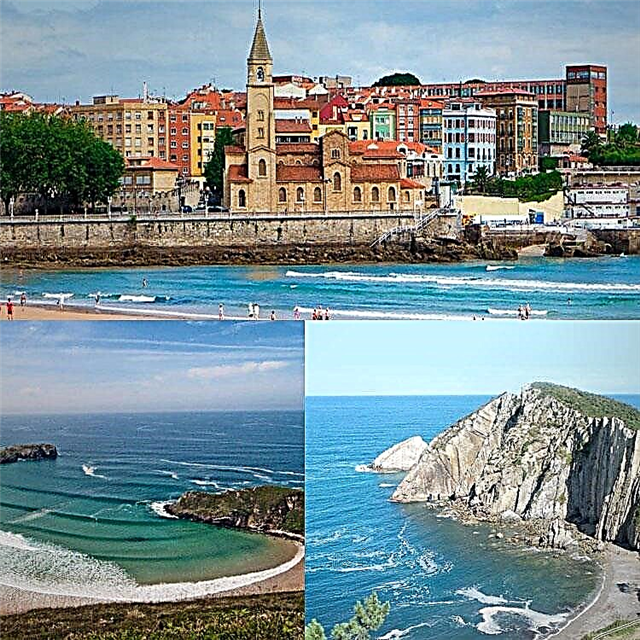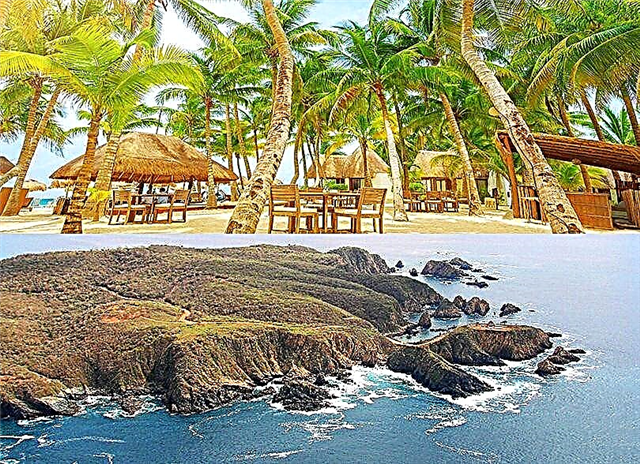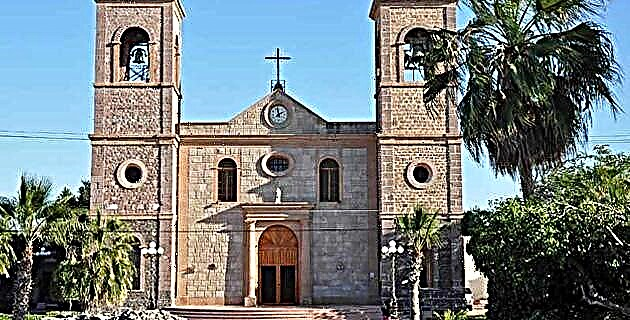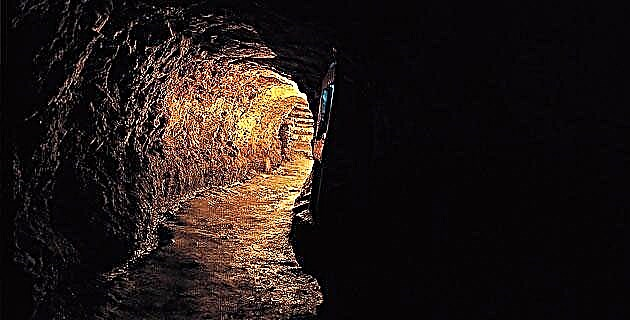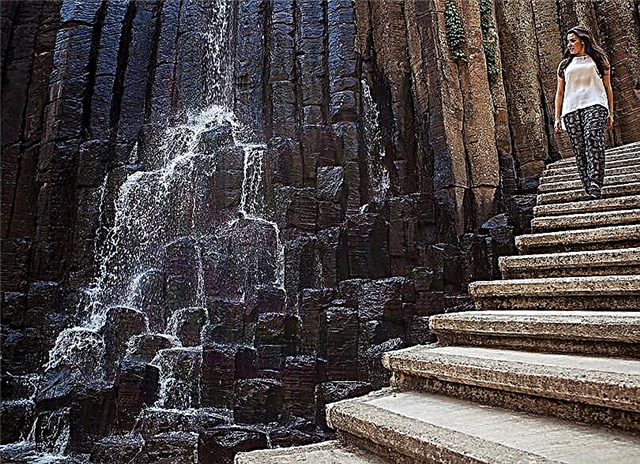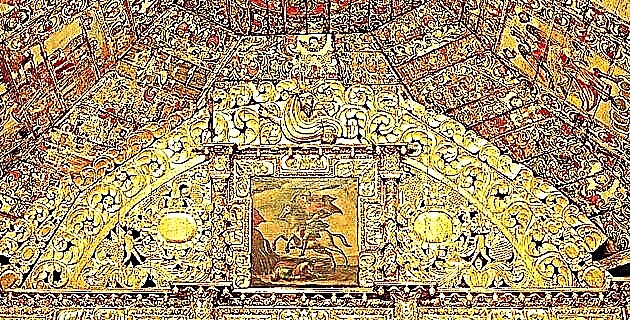
It was not yet noon when we started a route that we knew was long but exciting, since the road on wheels from the State of Mexico to Guadalajara, passing through Morelia, among other interesting places, would be full of pleasant panoramic, culinary and artisan surprises.
With everything ready for a pleasant trip of several days by road, we left Mexico City very early for Morelia to stop - first for a glass of the famous strawberries at km 23 on the Mexico-La Marquesa highway, and later on the highway. La Fogata cabin for a Mixtec soup - a combination of marrow, mushrooms and pumpkin flower that has no comparison - accompanied by a steaming champurrado in the gastronomic corridor of La Marquesa.
MUD MAGIC IN METEPEC
Along a path lined with pine trees we arrive at Metepec, where we marvel at the quantity and quality of clay objects produced by artisans and displayed along Ignacio Comonfort Street. Around here we come to a workshop inhabited by angels, saints, catrinas and fantastic creations among which the trees of life stand out and where Mr. Saúl Ortega, a craftsman with the experience of five generations, told us that although it is not very clear The origin of this particular craft in which paradise is represented with all its characters and the expulsion of Eva and Adam, is in Metepec where it has always worked.
TWO STARS MINE, BONANZA DEL AYER
Before reaching El Oro, on the right of the road, we find the Mortero dam, a water mirror surrounded by weeping trees and cattle grazing on the shore. Already in Michoacán, in the territories of the Monarch butterfly, we find a signpost to the Dos Estrellas mine-museum, declared a 19th century Mining Technological Museum and which was part of the five great mining bonanzas that for 450 years made the region of fame. Tlalpujahua. During its heyday, from 1905 to 1913, it produced 450,000 kg of gold and 400,000 kg of silver, an activity in which around 5,000 workers were involved.
FROM TLALNEPANTLA TO CUITZEO
Immediately we arrive at Tlalpujahua, an old mining town whose cobbled streets and red-tile roofs wind in all directions. In the middle stands the Parish Church of San Pedro and San Pablo, with a quarry facade and Baroque style, which stands out for its monumentality and also for the plasterwork decoration of the interior, in a popular style.
We continue towards Morelia and upon reaching km 199 we are amazed by the sudden appearance of the Cuitzeo lagoon, which crosses a very long four-km bridge that leads to the town of the same name, which due to its traditional architecture of old gates and wooden beams. wood that support the high tile ceilings, is part of a set of charming villages.
A TASTE OF MORELIA
In just 15 minutes we arrive in the beautiful city of Morelia. The next morning and with a characteristic fresh and humid air, we headed to the House of Handicrafts, but not before stopping to contemplate the beautiful cathedral from 1660, with a Baroque style on the façade, neoclassical inside and towering towers of more than 60 m high. Once inside, in the former convent of San Francisco, we made a trip to the popular imagery of all Michoacán. Here a very complete artisan variety of the most beautiful works made of wood, copper, textiles and clay is exhibited, to name a few. We toured Paracho and its guitars, Santa Clara del Cobre and its works of this material, Pátzcuaro and its carved wood, as well as the ceramics of Capula and the maque of Uruapan.
Later we went to the sweets of La Calle Real, an establishment set in the style of the Porfirian period and attended by women who wear period costumes, so we made a sugary journey through the history of Mexican sweets from pre-Hispanic times to the present. Here Josefina showed us how to prepare tea in the traditional way, in a typical kitchen and using the indispensable copper saucepan. Before we leave, we stock up on morelianas, ates, palanquetas, almond cheese, chongos and metate chocolate, as well as a bottle of fruit liqueur.
TWO DIFFERENT JEWELS: TUPÁTARO AND CUANAJO
We resumed our route aware that we would cross one of the most beautiful regions of the state, towards Pátzcuaro. Before we stopped in Tupátaro, where we discovered the temple of Señor Santiago, in which the exterior simplicity contrasts with the unique beauty of the coffered ceiling of the interior nave, formed by paintings that recreate passages from the life of Jesus. No less surprising is the corn-cane altar covered with silver leaf and the baroque wooden altarpiece covered with 23-karat gold leaf.
Continuing along highway number 14 we take the deviation towards Cuanajo and from before arriving we find the carved wood works carried out by most of the families of the town, furniture with large and colorful reliefs in which fruit and animal motifs stand out along with variegated landscapes that highlight the beauties of Michoacán.
THE UNEQUALED CHARM OF PÁTZCUARO
We finally arrived in Pátzcuaro and fascinated by the beauty of this legendary destination, we enjoyed such a particular panorama of cobblestone streets that meander leading to squares and charming corners. Time went by slowly, filling us with the freshness of the patios and the romanticism of the environment, the beauty of the colonial buildings and the traditional rustic houses, in addition to enjoying the artisan display everywhere and seeing why they were declared a World Heritage Site.
Thus we come to the House of the 11 Patios, or what was once the convent of Santa Catarina, currently with only five patios. The passage of time has managed to preserve the beauty of the traditional architecture and the conventual atmosphere of centuries ago is still breathed.
Almost about to leave, we take a walk around the docks, from which boats leave for various islands such as Janitzio. Here, on the shore of the lake, we chose to take a gastronomic souvenir from Pátzcuaro; After a small snack of charales with sauce that Mrs. Bertha offered us, we also tried corundas –a kind of triangle-shaped tamales covered in cream– as well as some uchepos –tamalitos of tender corn–, to say goodbye with the rhythm of the traditional old men, who gave us their best steps.
THE YACATAS OF TZINZTUNTZAN
We resume the path this time along Highway 110 towards Quiroga bordering the lake. Upon reaching Tzintzunzan we find the interesting archaeological site Las Yácatas. In a small site museum we learned details of the pre-Hispanic michoacan metallurgical tradition, as well as the skill of its ancient inhabitants in the elaboration of pieces of clay, farm tools, bone and ornamental articles of turquoise, gold and jade.
In the area of the ruins we discovered the remains of what was the most important pre-Hispanic settlement in the Tarascan state. From the height of this ancient ceremonial center formed by five monumental rectangular and semicircular constructions, you can breathe fresh air and dominate the landscape of Tzintzunzan with Lake Pátzcuaro that disappears on the horizon.
QUIROGA AND SANTA FE DE LA LAGUNA
Accompanied by the palm weavings and the wood and quarry handicrafts that line the road, in less than ten minutes we moved to Quiroga, and after briefly visiting the parish of San Diego de Alcalá, whose façade boasts a cross formed by inlays of porcelain, we arrived in Santa Fe de la Laguna.
Another detail that strongly caught our attention was a colorful mural made with pieces of tile on the Headquarters of Tenure, in the small main square, in which dramatic indigenous events such as the Acteal, Aguas Blancas and Chenalho massacre, as well as the representation of Zapata and his ideals of peasant justice.
FROM ZACAPU TO JAMAY
With deep reflection that kept us thoughtful for much of the way, we continued towards Zacapu to take a path that leads to the highway to Guadalajara. The climate changed drastically, becoming drier and hotter, and large stretches of lonely and somewhat rugged countryside appeared. At km 397 we crossed the limits of Michoacán and Jalisco and five minutes later the first blue landscapes appeared, sown with the agave with which the exquisite tequila is made.
In Jamay, a small town in Jalisco, we went up to the Chapel of the Virgin of Guadalupe and from the top we appreciated a panoramic view of the town with its characteristic monument to Pope Pius IX in the main square and Lake Chapala, which lost its limits on the horizon while the sun gave us its last rays.
THE WARM GUADALAJARA
Eager to reach our final destination, we continued our journey with great caution. We took the deviation to Zapotlanejo and then the Mexico-Guadalajara toll road, a clear straight where we could use the automatic pilot of the truck and rest a bit from the stress of driving on the previous bumpy road. Thirty minutes later we were at La perla tapatia.
The next morning we toured San Juan de Dios, located on one side of the Plaza de Guadalajara, a historic popular commercial center with an extensive sample of Jalisco handicrafts in which the pots, jugs and various clay utensils stand out accompanied by stalls crowded with the more traditional tapatíos sweets, such as jamoncillos and milk sweets from Los Altos, borrachitos, arrayanes, gum figures from Talpa, liquors and preserves from the mountain area, among many others.
Thus we arrived at the patio, with corridors in typical costumes, leather huaraches, traditional Mexican toys and a colorful display of vegetables and fruits. With a fresh tejuino surprising our palate with its special flavor –drink of fermented corn dough, with lemon, salt and sweet lemon snow–, at the next level we find an extensive gastronomic variety in which birria, drowned cakes and fish broths with recipes from the coast.
ARTISANAL TLAQUEPAQUE
It was obligatory to visit one of the most important artisan centers in Mexico. In Tlaquepaque we find a wide variety of creations ranging from traditional ceramics, wood and wrought iron furniture, textiles, blown glass and tin sheets, to interesting works by prestigious artists, such as Agustín Parra and Sergio Bustamante, among others, exhibited in galleries and luxurious shops. After hours of walking, it was a real pleasure to sit down in one of the Parián's equipales, to cool off with a chabela - a large glass of beer - or a shot of tequila with sangrita, eat a drowned cake and relax listening to the mariachi groups and dances Folklore at the central kiosk.
For another occasion we leave the tour of the modern city of Guadalajara, where its shopping centers and intense nightlife stand out, as well as other nearby places of great historical and tourist interest such as Tonalá, Zapopan, Chapala, Ajijic and Tequila; For now, we are fully satisfied with the good taste that its historic center, music, tequila and its colorful artisan creativity have left us.
TIPS FOR A GOOD TRIP
- In general, the road route is safe, although in some sections it is unpopulated. To avoid setbacks, before starting the trip it is necessary to make sure that the car is in optimal condition, since the journey is long.
- If you like handicrafts, you should take advantage of this unique opportunity and prepare with money and enough space in the car.
- The climate between Michoacán and Jalisco does not vary greatly, except that the former is a bit cooler compared to the hotter and drier in Guadalajara.
- If you have time, it is worth taking a detour and going into the Monarch butterfly sanctuary, since this beautiful show is unmatched.
- Morelia, Pátzcuaro and Guadalajara are the ideal places to spend the night due to their proximity to the places of interest, the best services and the tourist attractions they have.

